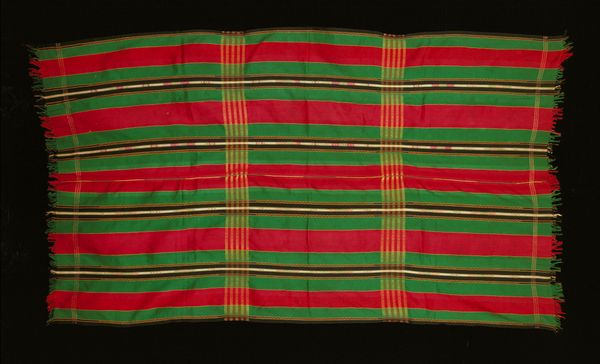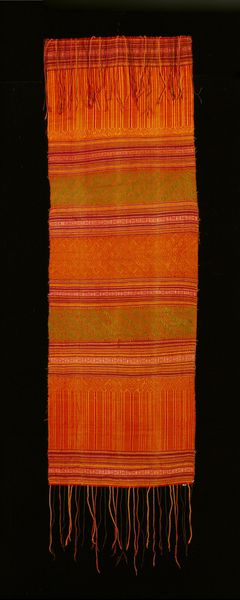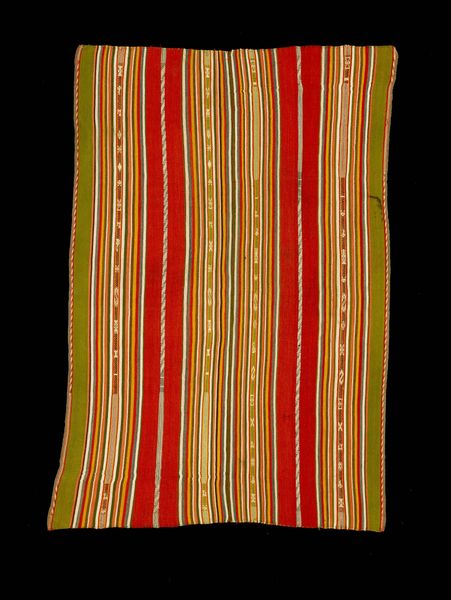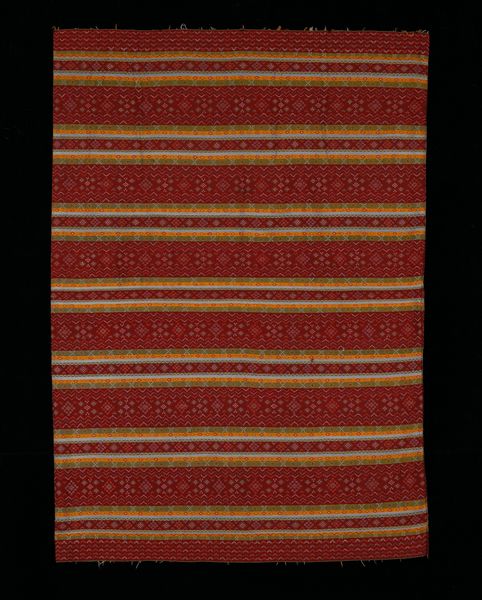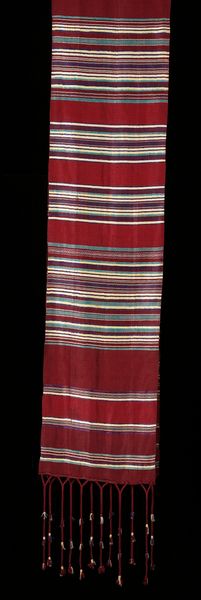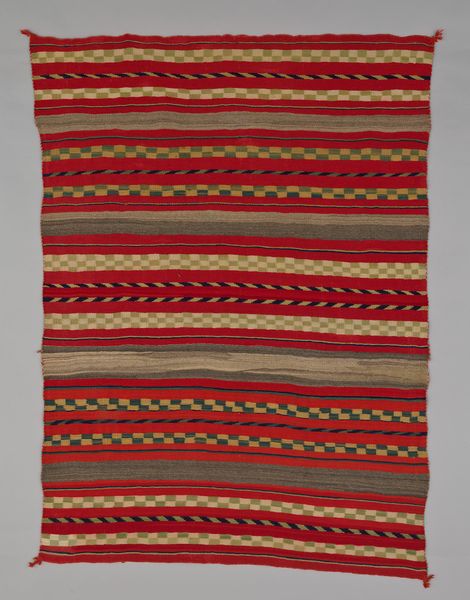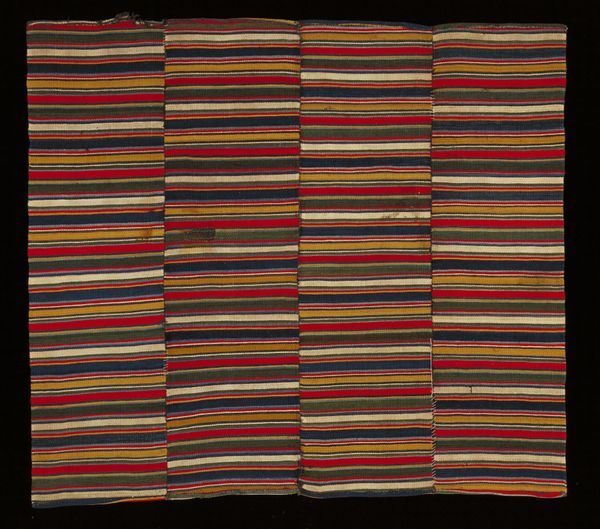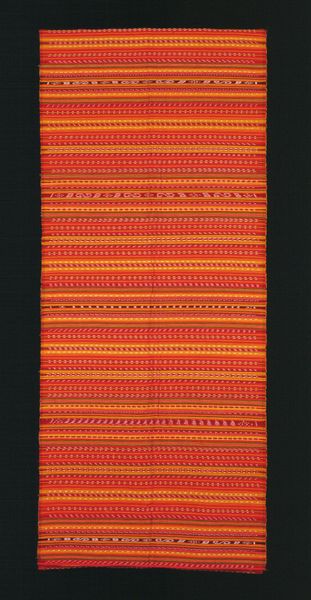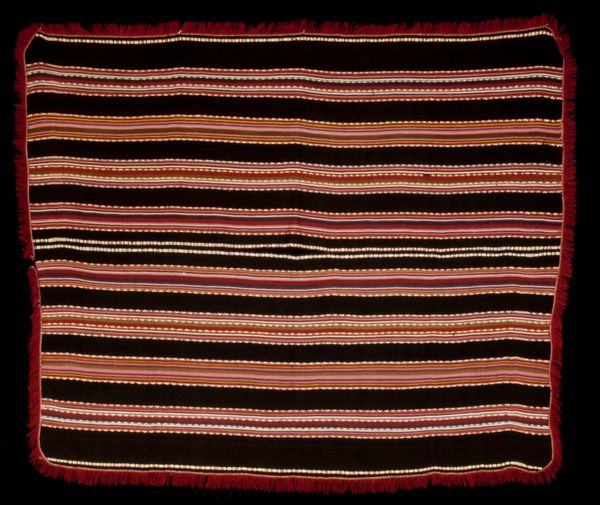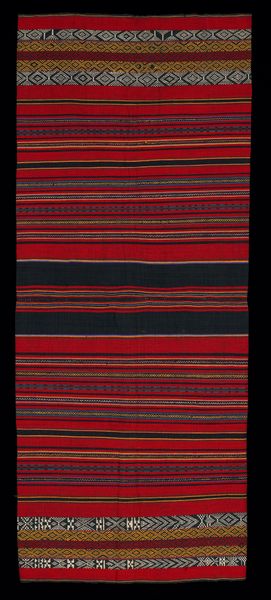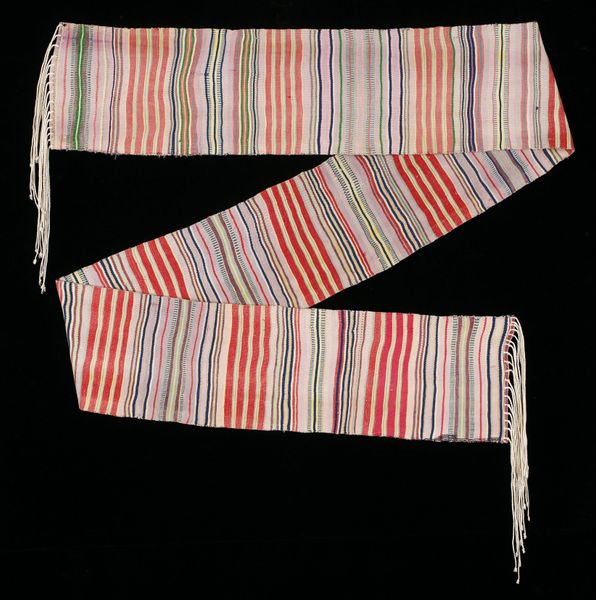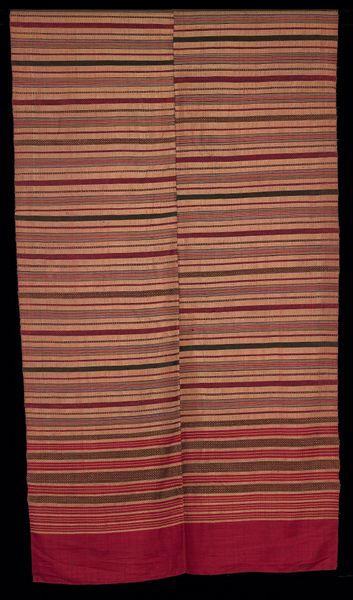
silk, weaving, textile
#
silk
#
weaving
#
textile
#
fashion and textile design
#
geometric pattern
#
hand-embroidered
#
geometric
#
repetition of pattern
#
pattern repetition
#
textile design
#
imprinted textile
#
layered pattern
#
funky pattern
#
combined pattern
Dimensions: 24 1/2 x 91 3/4 in. (62.2 x 233 cm) (without fringes)
Copyright: Public Domain
Curator: Here we have an exquisite 19th-century silk sash, a striking example of textile art now residing at the Minneapolis Institute of Art. Editor: The vibrancy immediately catches my eye! The energetic bands of colour are surprisingly harmonious. You can almost feel the texture just by looking at it, feel the hand that wove it. Curator: Indeed. Its power resides not just in the pattern but also in what it signified culturally. A sash like this might have communicated social status, regional identity, or even specific affiliations. Colors themselves carried complex coded meanings. The particular combination may have resonated deeply with specific cultural narratives or belief systems of the time. Editor: The tight, regimented lines also suggest a demanding labor process. Weaving like this involves intensive hand work, meticulously crafting these intricate patterns thread by thread. I’m struck by the combination of creativity and industrial precision. Think of the looms, the dyestuffs used to create these rich colors… each a testament to material resources and available technologies. Curator: The geometric structure also acts as a kind of visual anchor. Repeating patterns appear often in various cultures throughout time because they often hold ritual significance. This piece also carries this echo of ancestral tradition into modern usage. Wearing such a design connects us visually to the past while existing vibrantly in the present. Editor: It makes me question, though: what was the context of its use? Was this sash worn daily or only during ceremonial events? How does this material—silk—influence its value, its accessibility, and ultimately, its reception? Those answers reveal so much. Curator: Absolutely. It embodies cultural memory through its visuals. Each time someone saw it worn, they would recognize and affirm the shared values represented within those threads. Editor: And I can’t help but think about the long history of textile production and trade... this object’s life extends beyond its maker, implicating supply chains and economic systems that shaped its creation. Curator: Well, regardless of the deeper answers, it speaks of both continuity and transformation, making it more than just an attractive accessory. Editor: Ultimately, it makes us consider what it means to create beauty out of process, out of something that demands precision and patience.
Comments
No comments
Be the first to comment and join the conversation on the ultimate creative platform.
